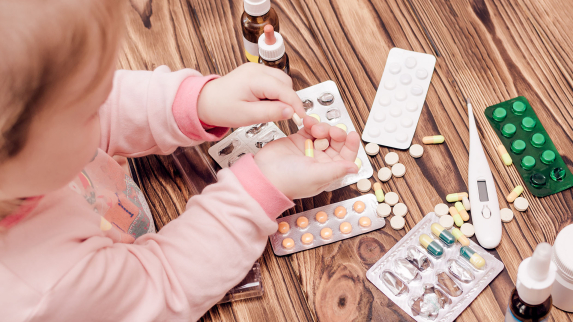A dog’s pain medication, a grandparent’s pill organizer, even a discarded tissue: Rutgers Health research reveals they’re all potential sources of opioid poisoning for young children. Researchers at the New Jersey Poison Control Center examined 230 cases of opioid exposure in children ages 1 month to 6 years over a five-year period. Their findings in the Journal of Pediatrics show how children access these dangerous drugs.
“We’re seeing this in our clinical practice,” said Diane Calello, the medical director of the poison control center and senior author of the study. “I’ve seen too many kids in my practice at University Hospital who have gotten severely poisoned because they got opioids in their house.” An overwhelming majority of exposures (97 percent) were unintentional. More than 91 percent occurred in the child’s home, and 84.3 percent resulted in the child being admitted to a health care facility.
While many cases involved a child accessing a parent’s medication, the study uncovered several unexpected sources of exposure. Grandparents’ medications were implicated in 17.4 percent of cases, highlighting what the researchers described as an often-overlooked risk factor: exposure to older adults who may not be as vigilant as parents about securing their medications. To read the full story.

